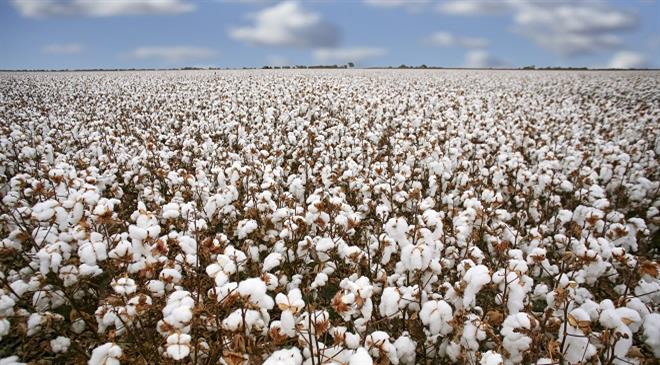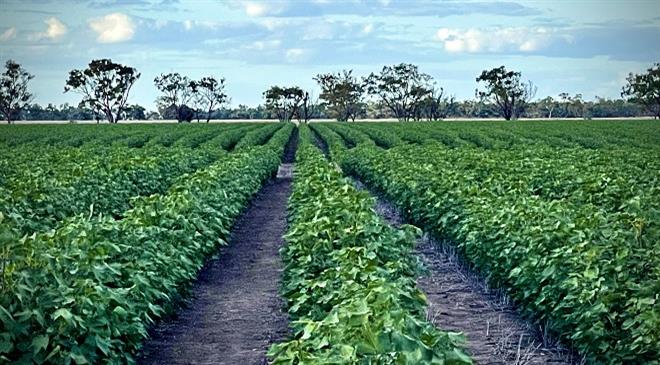Cotton is still the most preferred fibre for customers to wear
Twenty-five years ago, Danielle Statham couldn’t tell a thing about cotton. Today, alongside husband David, she stands at the helm of the world’s first carbon positive, sustainable, traceable and most ethical cotton-producing company, aptly-named Good Earth Cotton. Grown by the couple’s own Sundown Pastoral Company at Keytah in Moree, the cotton is produced by an environmentally-passionate team of farmers using the world’s most advanced and ecologically-innovative production techniques. In a discussion with Fibre2Fashion, Statham speaks on traceability, carbon positive cotton, regenerative agriculture and more.
In which all countries/regions is cotton grown sustainably? What is the percentage of sustainable cotton in overall global cotton production?
The global cotton facts are:
- Cotton is grown globally by approximately 28 million farmers who produce on average 27 million Metric Tonne annually valued at approx. $37 billion
- Cotton crops globally account for 34 million Ha generating 250 million jobs globally.
- Cotton accounts for 27 per cent of all fibre types used globally.
Further to the above the truth is... there is no data to substantiate that cotton is grown sustainably, where it grows and how much is available in market to use.
In fact, the word sustainability has become so genericised that it has become difficult to determine its true meaning, therefore the reason we are defining the message with science and metrics at Good Earth Cotton.
We prefer to take the narrative to ‘modern regenerative farming’ whereby the meaning of regenerative is to restore or repair. We add an extra layer and use science, primary farm data with metrics and technology to prove our restoration with transparent and honest messaging backed by traceability.

In some countries it is reported that farmers were compelled to sell their organic cotton at ordinary prices because there is no demand. How do you ensure that: 1) there is enough demand for your cotton, and 2) sustainable cotton fetches higher price?
At Good Earth Cotton, we aim to prepare, grow, and harvest a crop which does better for the environment and for the people who grow the fibre. We aim to give back to the grower to invest money back into tools required to grow cotton with the most environmental and socially ethical outcomes possible.
At Good Earth Cotton, we respect certification as it has been the answer thus far as a dependent. However, in many cases this has been a highly profitable business for those furthest from the farm. This is much like the data input into a stand-alone blockchain system to trace transparency; if the information is added incorrectly the system verifies and locks a false narrative.
Transparency with honesty and truth sells itself. We use the FibreTrace traceability system to certify our raw fibres at Good Earth Cotton the ability to have a physical tracer embedded in our fibre to act as a certificate for every thread woven to create your fabric or garment. The physical tracer is the power which drives the truth in our blockchain at every step of the supply chain process where information can be accessed in real time.
How does cotton marketed by Good Earth Cotton compare with ordinary cotton in terms of emissions, energy consumption and other compliances?
As far as we know, there are no programmes which capture primary data from fields with full transparency and traceability from paddock. The industry has aggregated data in abundance, however region by region, country by country this data has such wide variances that it is almost impossible to use this as a benchmark for what is more sustainable than another.
The conversation is not to pitch one cotton against the other, as this will only create further divide and ambiguity in the industry. To make change as an industry we must agree on a universal conversation of what benefits the farming communities and their environment in individual regions country by country.
There are several types of sustainable cotton, like organic cotton, GOTS certified cotton, etc. How does one differentiate between all these?
At Good Earth Cotton, we believe chemical free is not just the answer or GMO free is not just the answer, and ‘soil health’ must be the prerequisite!
With healthy soil we have a co-existence of flora and fauna, with microbes playing a role to diminish the negative impact on the environment in fibre growth. We promote a set of farming practices which consider several factors of scientific disciplines and social movements to mimic the way nature is intended to work and a way to consider agriculture and its wider community including ecological systems.
Conversation and clever marketing names or campaigns should tread with caution not to dilute the positive power of agriculture using best practice. We have concern this could lead to having science-based outcomes and research open for interpretation.
At Good Earth Cotton, we believe that by narrowing down concise metrics that can be quantified opens conversation to the stability of those who are prepared to greenwash, and spotlights those who are leaders in changing the status quo.
Traceability is an important factor these days, particularly for global brands. How can one trace cotton that is used in textiles?
Traceability is one component that brands are valuing in the new way forward for a better supply chain. However, the true value of traceability is when transparency builds trust and confidence by enabling customers with the power to make informed purchasing decisions.
Cotton has the most complex supply chain of all fibres available on the market and at Good Earth Cotton we know the only truthful way to trace cotton is to have a physical tracer embedded into to fibre. The tracer needs to travel with the fibre from the farm or gin to the mill, in the fabric and the finished garment and through to reuse and recycle.
Good Earth Cotton uses the FibreTrace traceability technology to verify its cotton. It is the only technology in the world to collate information and hold data to reveal the absolute truth in real time, through a patented physical and digital tracing system. Physical meaning embedded organic high security pigments, and digital meaning a propriety purpose built blockchain system.
Good Earth Cotton’s high-quality cotton fibres are independently certified as carbon positive, environmentally sustainable and fully traceable. Can you elaborate all these?
A carbon positive cotton system is one which accumulates more CO2 than it emits. Carbon Positive (or climate positive) fibres are grown while measuring soil and carbon emissions whereby all key soil indicators are measured at the same time within the same proximity yearly. Vegetation of young growing plants accumulate more CO2 using more energy. Soil sits in a neutral state when it is not growing anything. Through cropping, we increase biomass, i.e., by doing something with our soil we make it active. Plants have roots which push through the soil stimulating the microbe cycle and energise the system.
Soils like diversity – much like the human gut. It is a living thing. It wakes up when plants are growing in it. When soil has moisture, it is active and healthy – it multiplies beneficial insects, worms and bacteria creating another world under there. I call it a village of goodness. Key soil indicators are measured to access information on improvements. We combine this with measuring the emissions of inputs to give a full evaluation of the crop.
Metrics are based on IPCC standards and use ISO accredited methodology – backed by the GHG carbon accounting protocol. All Good Earth Cotton is traced with the FibreTrace system to verify the authenticity of fibre from farm through to reuse and recycle. We believe that having a physical tracer connected with digital tracer is imperative to enable full transparency for the cotton fibre, particularly where blending and mixing of fibres from all corners of the world has historically been considered usual practice at the beginning of the supply chain for nearly all garments sold on shelves.
If one keeps on growing cotton continuously on a piece of land for several years, then the yield decreases. So, what should farmers do to maintain yield at the same levels?
Cotton is a desert plant, and hence given enough water and enough nutrients, it will continue to yield generally the same year after year. The issue is when back-to-back cotton crops deplete natural nutrients in the soil. Where the crop is grown and if these nutrients are not replaced with (often costly) synthetic inputs, the cotton would struggle to bear enough fruit to generate yield. Other than yield more concerning situations which could arise with back-to-back cropping, and this would include crop disease increases and in some cases pest resistance.
At Good Earth Cotton, crop rotation is critical to the increase in natural soil nutrients, biodiversity and soil compaction assisting in not only disease and pest management but also with soil moisture to increase necessary beneficial environmental aspects to growing healthy crops, which of course has the flow on effect of high yields and consistent quality of fibre.

How does one understand the term ‘ethical cotton production’? What techniques are used in producing such cotton?
As a thought, ethical to me is behaving in a way which is honest. As an action, ethical cotton production could be defined as “cotton which is produced within broadly accepted societal norms”.
At Good Earth Cotton, ethical production is defined as respect for our team members, respect for the community in which you partake and live within, respect for the supply chain who use our fibres. We value the rights for quality of living standards as well as valuing and respecting the natural resources we have borrowed from the earth to produce the fibres we grow, and we aim for partnerships with like-minded companies to continue to evolve the circle of ethical production.

What is carbon sequestration? What role does it have in cotton growing?
Carbon positive cotton is cotton which is grown in soil that is acting as a giant carbon sink and drawing CO2 from the atmosphere and locking it under the soil. Carbon sequestration in young growing plants and vegetation accumulate more CO2 by using more energy in the growth cycle.
Regenerative agriculture is outcomes based. Positive outcomes in soil health protects and restores biodiversity, plant and animal species and microbiome. It is only when this is measured can we define the outcome. The Good Earth Cotton journey is to become more biologically sound – less aggressive in our approach. If your soil data is not showing improvement, you are not in a regenerative state!
Tell us about your farming innovation—the Fibre Impact Module?
I developed the FibreTrace system with my team in 2018. This was prior to the Good Earth Cotton brand a year later. Yet, it was the Good Earth Cotton brand which drove the Fibre Impact Module (FIM). This was driven to enable scalability and ease of adoption for more growers to partake in our system.
By demonstrating improvement and understanding the value of data recording both economically and environmentally, enriching their soil and reducing inputs, the module became a powerful information software tool for not only cotton but all natural fibres. Our teams for both businesses have spent years on strategy, ease of adoption and scalability to ensure that we have fully secure and compliant systems to bring adoptable positive change for the full supply chain at a global level.
What separates us from other traceability technologies is that we are a team of supply chain experts in our own right.
I am incredibly proud of what our group has been able to achieve in the timeframe since conception.
The use of synthetic fibres for clothing has been growing at the expense of cotton. In this context, how do you see the future of cotton?
The short answer is that raw synthetic fibre is half the cost of cotton, and the enquiry is at what cost to the earth!
The lack of global lifecycle assessment data (LCA) data on synthetic fibres can cause confusion or complete ignorance for the customer who willingly or unknowingly purchases a garment made from synthetic fibres. Couple this with the lack of transparency in the recycled poly (r-PET) conversation. To change the status quo governmental rules will need to enforce industry to substantiate sustainability claims with verified science and metrics at the core of the messaging. From a societal level customers need to play a role to mitigate plastic use and promote circularity. Economically, the cost of recycled polyester would even out the cost of natural fibres such as cotton.
Studies show cotton is still the most preferred fibre for customers to wear, and history tells us that cotton is one of the oldest fibres known to man. But for us as an industry, in order to maintain or increase market share, it is imperative that we show genuine, responsible land management outcomes with environmental and social compliance through transparent messaging based on universal methodologies and scientific outcomes.
The plan for Good Earth Cotton is to share this journey globally and provide this as a plug and play solution at the very beginning of the supply chain.




